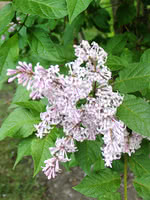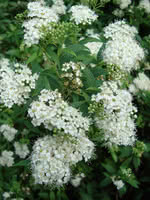Mon-Fri 9am - 5pm Mountain time
Villosa Lilac vs White Meadowsweet
Syringa villosa
Spiraea alba
NOT AVAILABLE THIS SEASON - MIGHT RETURN
Popular Hedge Species!
Villosa Lilac is a relatively large and cold hardy shrub. It provides excellent privacy and wind protection.
Its fragrant, pink flowers grow in clusters at the end of its branches during mid to late summer and fade to a light pink over time. Villosa Lilac grows quickly and is drought resistant, making it suitable for the outer row of a shelterbelt. Its roots are non-suckering and it does not compete with nearby crops.
If you alternate Villosa Lilac and Common Purple Lilac in your hedge, your hedge will flower for more of the summer than if you plant either Lilac on its own.
Note: Villosa Lilac is more salt-tolerant than most of our stock.
White Meadowsweet is a woody, deciduous shrub that begins to bloom in early summer with small white and pink flowers. Its foliage turns from a light green into an attractive golden-yellow later in the fall.
The White Meadowsweet, also known as Mead-Wort or Bride-Wort, is favored by birds and butterflies but is largely ignored by deer. They produce small brown berries in the summer, and while they are technically edible, they are not sweet and are more desired by wildlife.
Villosa Lilac Quick Facts
White Meadowsweet Quick Facts
In row spacing: 0.9 m (3 ft)

